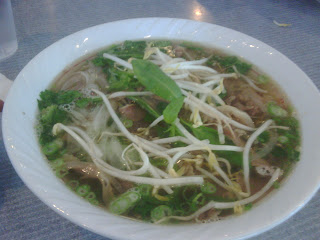Start building a flavorful liquid. Onions, garlic, white wine, fresh herbs. If you're cooking bivalves do it now, them pull them out but keep all the cooking juices in the pot.
Pick a liquid. Peterson says fish stock, chicken broth or water, absolutely no clam juice. Cooks Illustrated says fish stock or water with clam juice but no chicken broth. I say no fisherman is cooking his fresh caught fish in chicken broth, and clam juice is too one dimensional and strong. I went with fish stock, but frankly with all the flavor and cooking juices, water would be fine.
If you are using lobster or crab, steam them separately, but be sure to capture all the internal cooking liquid in the soup pot as well a the shells. The meat will go in at the end.
So what flavors the liquid? Shells, fish heads whatever is from the seafood you will be cooking. Simmer it all till it smells fabulous - about 30 minutes.

How could something this ugly end up tasting so good?
Next add tomatoes. I'm guessing if there weren't tomatoes available the fisherman would use whatever veggies were available - soup is a great way to use up vegetables! I like the tomatoes because they add a bit of acid to the flavor - gives it more dimension and strength. I suppose lemon would work too, but it would be a much different soup. The tomatoes add a lovely color too.
Now that you have a delicious broth, you can cook the fish and seafood. Start with what takes the longest, adding the bivalves and
any other cooked seafood at the end. Finally, turn off the heat, add salt and pepper as needed and whisk in some fresh flat leaf parsley. And don't forget the crusty bread!
Incidentally, hard crusted bread is the rough translation of my husband's family name. Hmmm...










